Why do people reach out to technical documentation?
However you formulate it, the gist of the answer to that question is that readers need technical documentation to learn about a product or a service, to solve a problem, to figure out how to perform some action, etc.
But, your readers aren’t all the same—they differ in many ways, be it education, technical prowess, interests, or dozens of other factors.
In this article, we’ll examine audience analysis—a tool you can use to write in a way your audience finds the most helpful.
What Is Audience Analysis
Every writer has an audience, and it’s the same with technical writers. However, technical writers should consider their audience even more than their peers who write other types of texts.
Why is that? Well, the reason lies in the nature of technical documentation.
This type of documentation is created with a specific purpose. Here’s a simple explanation by Jacob Tanis, an experienced technical writer and communicator:

Source: Quora
In other words, technical writing aims to teach the readers and provide them with some knowledge, instructions and usable information—it’s practical in nature.
That’s where the audience analysis comes in.
To create documentation that fulfills the purpose we described, writers should know who they’re writing it for.
Audience analysis helps them with that, according to writing coach Molly Carter.
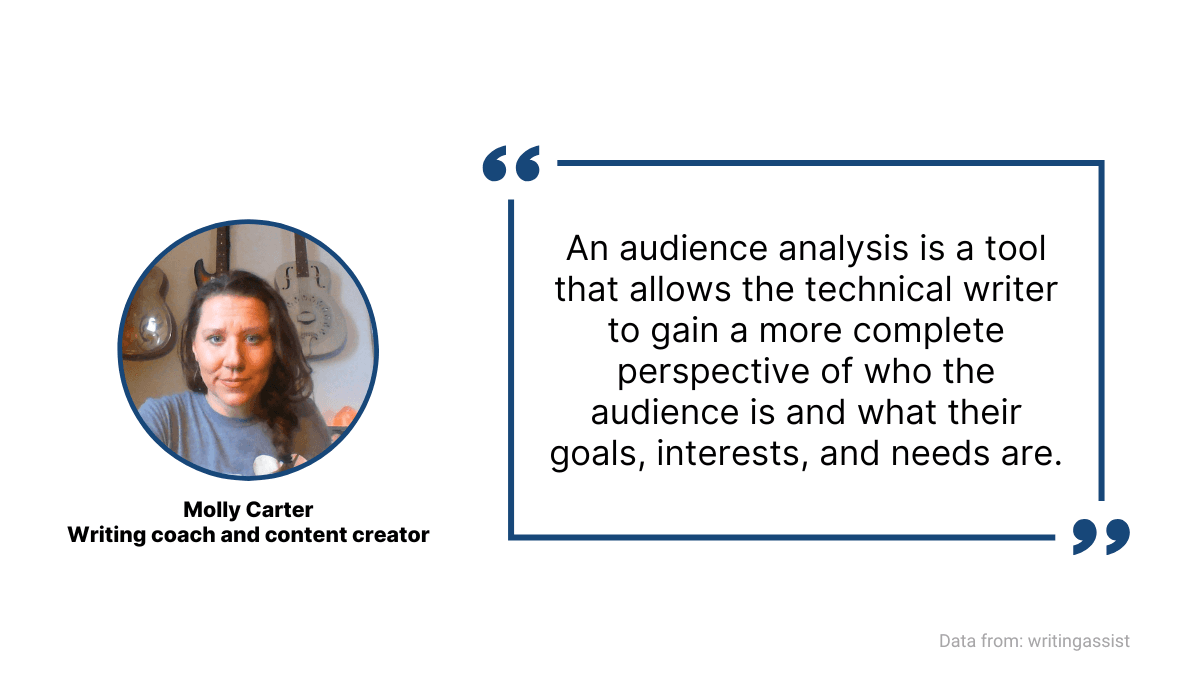
Source: Archbee
In essence, audience analysis is a way for writers to get to know their audience.
It’s an important starting point for creating any type of technical document, whether it’s a user manual for a smartwatch intended for a general audience, or API documentation for software developers, like this one from Twitter below.
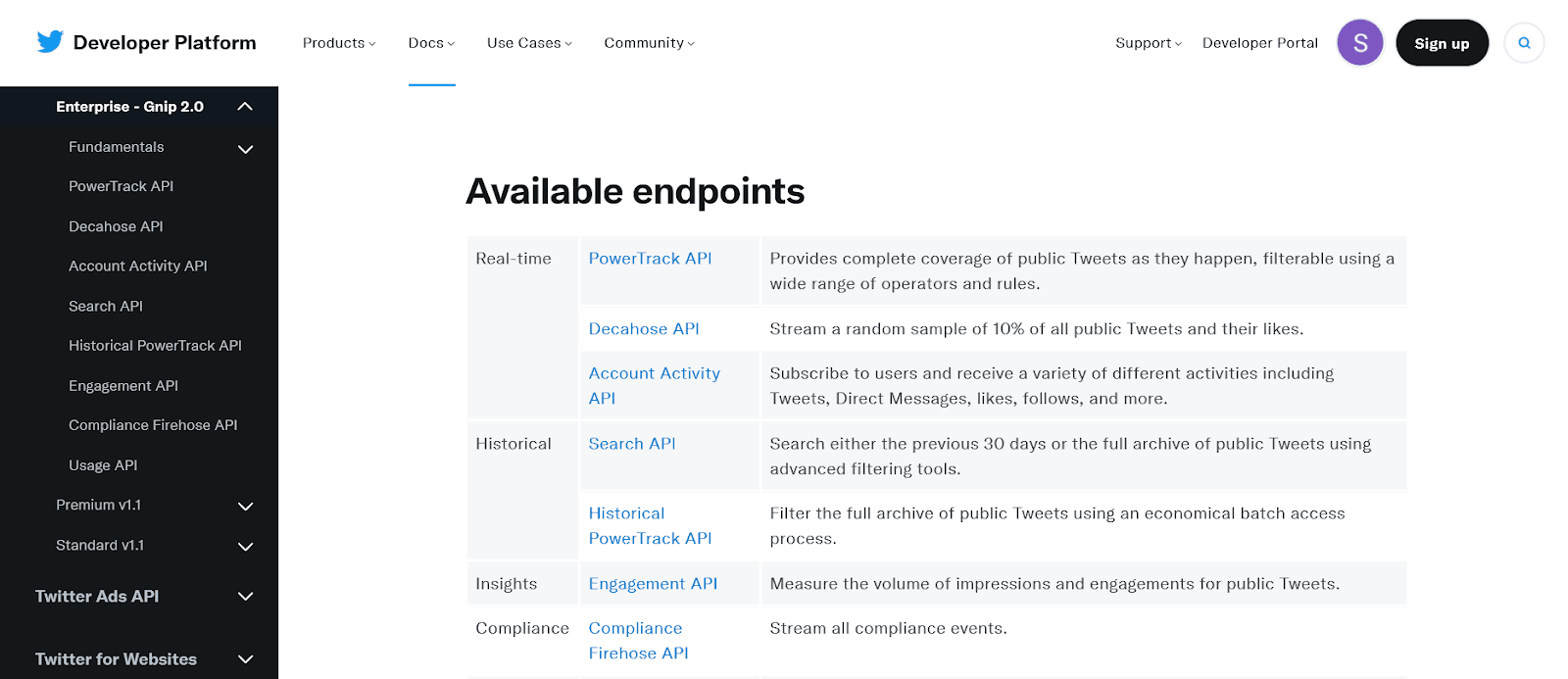
Source: developer.twitter
Even at a glance, you can notice that the above example isn’t intended for someone who is not a software developer.
This is a good example of audience analysis—the writer knows exactly who will be reading the documentation.
Not only is it useful, it’s crucial. According to Rhoda Israelov, a corporate blogging consultant, it’s something you shouldn’t overlook by any means.

Source: Twitter
Although we touched on why audience analysis is important, that deserves a section of its own.
So let’s now explore why technical writers should put some effort into getting to know their audience.
Why Should Technical Writers Do Audience Analysis
There are several benefits of doing audience analysis, so let’s get started with examining them.
As we mentioned earlier, technical writing always has a goal. Of course, that goal depends on the type of documentation.
However, it also depends on the audience, and that’s why audience analysis is necessary.
As a technical writer, it’s not only natural to ask yourself who your audience is, it’s also essential—who you are writing for will heavily influence how and what you are writing.
David McMurrey, a former writer and editor at IBM, puts it like this:
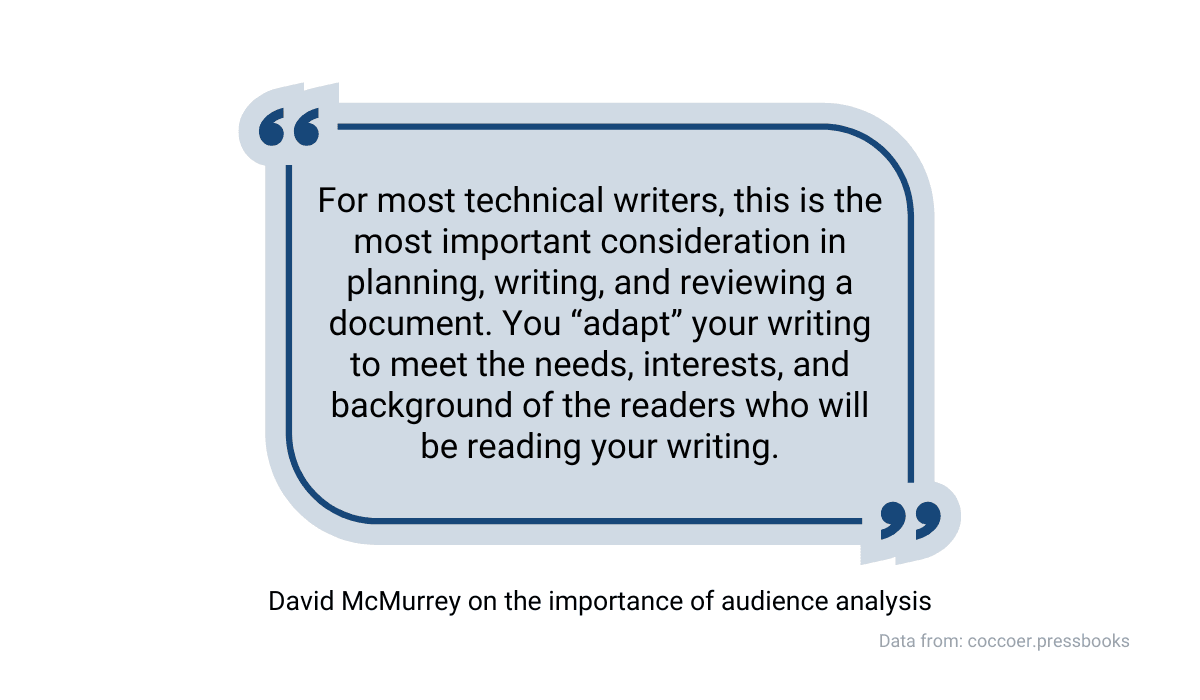
Source: Archbee
In short, you should analyze your audience to find out all the information you can about them, making it easier for you to write to reach the document’s goal.
For example, let’s say that you need to write a user onboarding guide for CallerDesk, a ready-to-use voice communication platform.
One look at their website can tell you that they offer services to a wide range of industries.
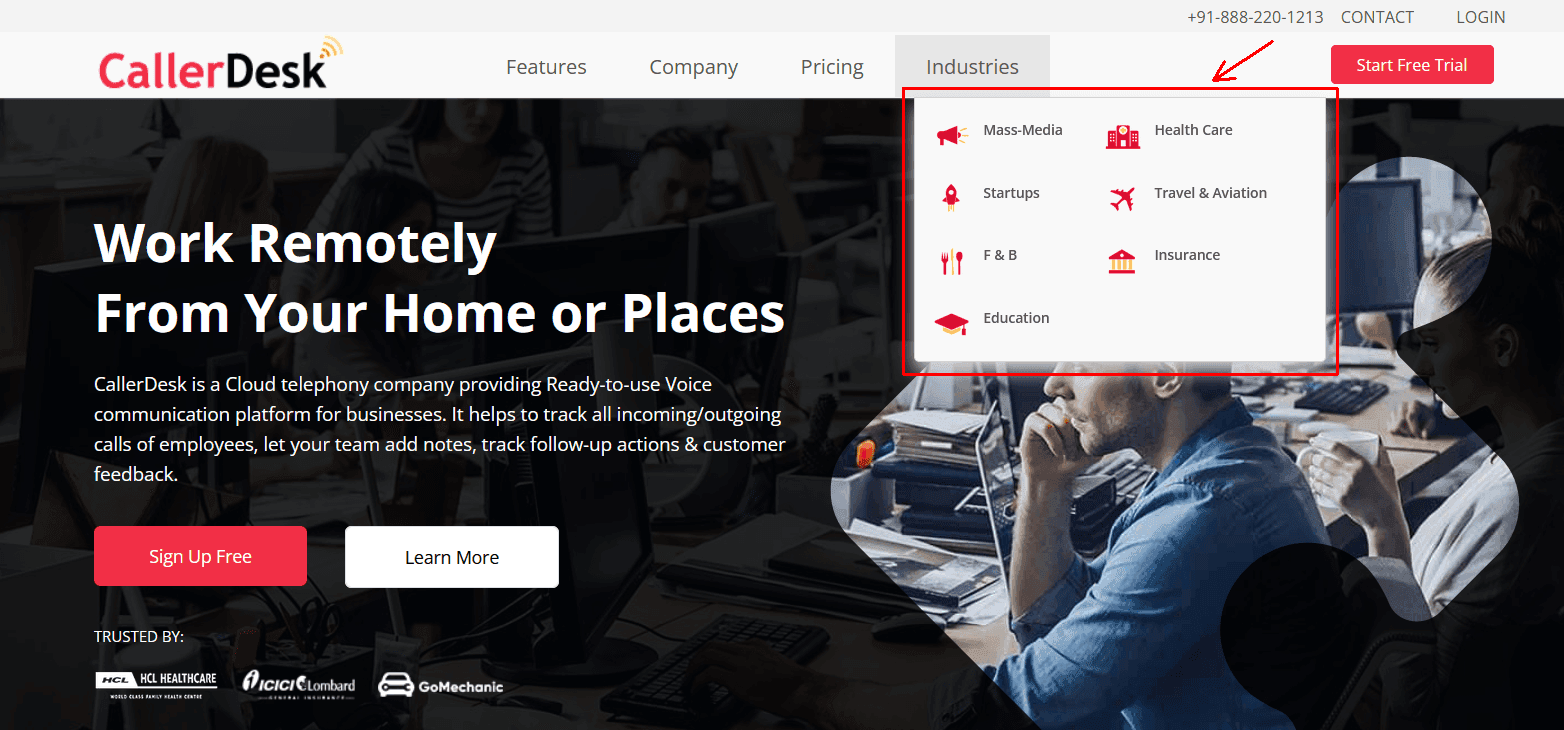
Source: CallerDesk
So, now you know that you should suit your writing to a broad audience that most likely isn’t knowledgeable about the intricacies of a voice communication platform—they just need it for their business.
And that’s only a small part of audience analysis. Here’s an example of more elements to consider:
- What are the goals of your audience
- What is their education, knowledge, experience, training, etc.
- What are their needs and interests
- Do they have any culture and communication preferences
And after you get to know your readers, you might decide how you will write that user onboarding guide.
Below, you can see a part of it created in Archbee, our own product documentation platform.

Source: docs.callerdesk
As you can see, the writer used clear and simple language to write instructions, with no complex technical terms.
Of course, some audiences don’t require that writing style, but that’s why audience analysis is vital—without it, writing is like poking around in the dark.
Types of Audiences in Technical Writing
If you put time and effort into audience analysis, you’ll learn more about your prospective reader, guiding your writing.
And when you find out who your audience is, you can fit them into one of these categories:
- Experts
- Technicians
- Executives
- Non-specialists
These four audience types have characteristics that determine the goal of the documentation and how you, as a writer, can approach it.
Here’s a general rule that Molly Carter proposes:
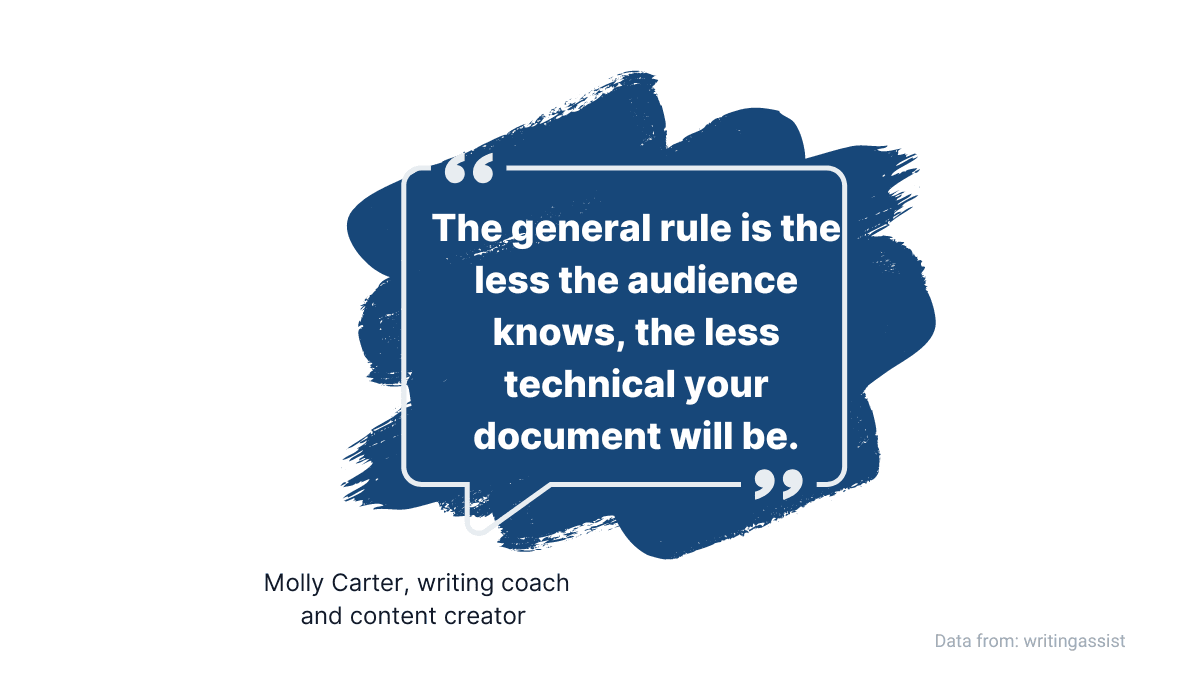
Source: Archbee
Let’s start with the experts. They know the product inside and out—how it works, its design, purpose, etc. They’re usually well-educated and hold positions like academics and researchers.
The technicians are more interested in the practical than the theoretical side of the product—they develop, maintain, fix, and operate products.
These two types of readers are different, but also similar in a way—both the experts and the technicians possess a high degree of knowledge and familiarity with the product, or at least with its principles.
That’s why writing for them can be more technical, with more jargon and complex terms.
For instance, the documentation for Information Technology Infrastructure Library (ITIL) you can see below is clearly intended for an audience with a certain level of technical knowledge.
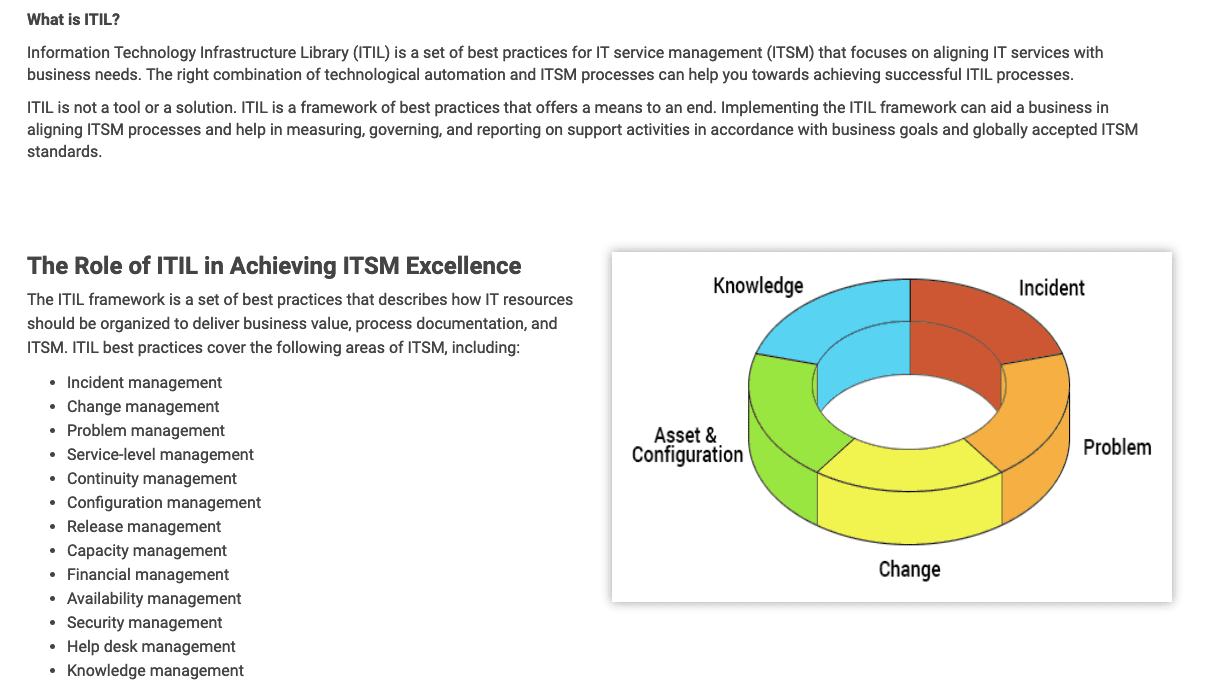
Source: contentninja
It uses an abundance of terms that will only be understood by the people who have good knowledge of this topic.
The third type of audience are the executives. They make decisions about products, whether economic, administrative, business, marketing, etc.
And the last category is non-specialists. Simply put, they are users of the product who just want to learn what it can do and how to use it.
Executives and non-specialists don’t have the level of knowledge that experts and technicians have.
In the case of executives, their knowledge is basic, or they might not have it at all, like many non-specialists.
Therefore, your writing for those two groups should be straightforward, simple, and without assumptions about their pre-existing product knowledge, like the Slack user documentation you can see below.

Source: Slack
To sum up, knowing what type of audience you’re writing for makes all the difference.
There is no need to explain and define every little detail if you write for knowledgeable readers—you can waste your time and effort, as well as their patience that way.
On the other hand, if you write too technical for your layman audience, your writing will be unusable for them—they simply won’t understand it.
Writing For More Than One Type of Audience
Adjusting your writing for a particular audience is challenging enough, but sometimes you’ll have to write technical documentation for more than one type of reader.
That means that you need to consider the level of knowledge, interests, needs, and goals of not only your targeted audience, but also your secondary or even tertiary audience.
Let’s look at the Slack product documentation once more to see how they approached multiple audiences.
Slack’s help center targets users of their software—those who would fit into the non-specialist category we mentioned earlier.

Source: Slack
In every category, there are many guides to Slack’s features.
Since they’re targeted at readers who, most likely, aren’t familiar with the product, the writing is straightforward and easy to understand—like the article about managing emoji preferences.
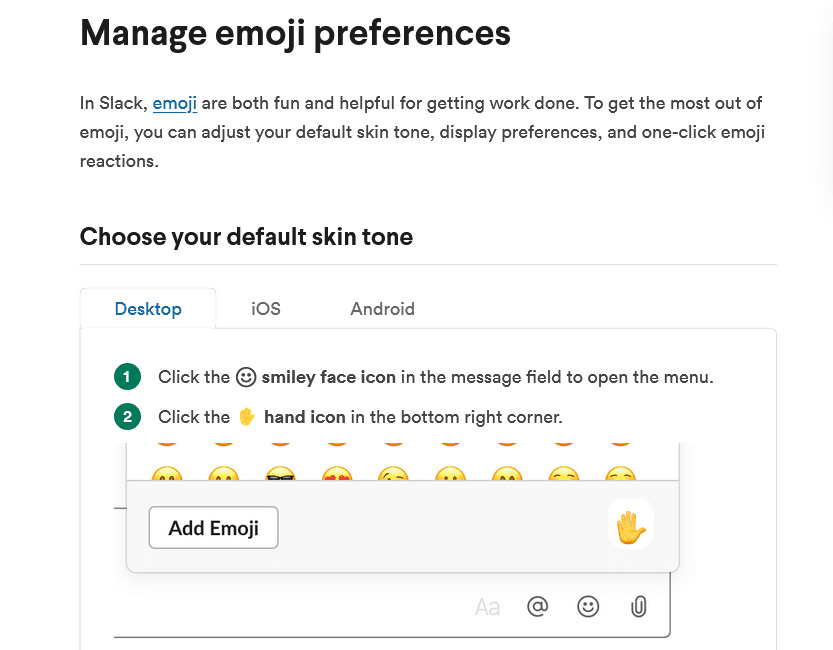
Source: Slack
However, Slack’s documentation also has a part intended for a different audience type.
Their resources for developers are targeted at people with a high level of technical knowledge, who can comprehend and use more advanced software features.
For instance, the documentation about monitoring audit events as admins is even labeled as advanced, as you can see below.

Source: api.slack
But that’s not all—there’s also Slack documentation for executives.
For example, executives might be interested in learning more about Slack’s partners and seeing if their organization can benefit from using their software.
So, executives can access the documentation about Slack’s technology and security partners and learn how they work together.

Source: Slack
And since executives are in charge of various business decisions, they can decide if they want to contact Slack about partnering up with them.

Source: Slack
To summarize, audience analysis will show you who you are writing for, but it could turn out that you’ll have more than one type of reader to adapt to.
A great technical writer can undoubtedly rise to that challenge, but without analysis, they wouldn’t even know they need to.
How to Conduct Audience Analysis
By now, we’ve established what audience analysis is and what its benefits are.
Also, we’ve discussed the possible audience types and how a reader can influence a writer’s approach to creating a technical document.
But how to conduct audience analysis? That’s the question we’ll aim to answer in this section.
Let’s start.
Gather Information About the Audience
The first step in conducting audience analysis is to find out as much information as possible about the audience you’re writing for.
This information gathering directly influences the technical writer’s end product—the document.
How? It’s simple—the more information you gather, the easier it will be to write the document, adapt your writing style, decide on the amount and the nature of information you’ll provide to the readers, etc.
In short, with plenty of information about the audience, you can tailor your writing precisely to their characteristics.
Here’s advice from Molly Carter on what information you can gather:
- Who is the audience?
- What do they need?
- Where will they be reading?
- When will they be reading?
- Why will they be reading?
- How will they be reading?
Also, you can gather that information in various ways. One of the simplest is a survey you can make with tools like SurveyMonkey.

Source: surveymonkey
As you can see, they have plenty of ready-made templates that could help you, and you can always create your own survey that would gather all the information about the audience you need.
Besides surveys and questionnaires, there are several more methods of gathering information, like observing the audience, acquiring their feedback, using information from the marketing department, etc.
Regardless of the method, once you get the picture of your audience, it’s time for the next step.
Define Your Audience Type
Based on the information you gathered, you should define the type of audience you’ll create your technical documentation for.
As we mentioned earlier, your audience can range from readers with expert-level knowledge to laymen who don't know the first thing about the product or service you’re writing about.
Luckily, if you gathered relevant information about your audience, you shouldn’t have a problem defining their type.
However, besides the four general categories we discussed, Google’s Technical Writing Course suggests identifying the audience’s roles, for example:
- software engineers
- technical, non-engineer roles (such as technical program managers)
- scientists
- professionals in scientific fields (for example, physicians)
- undergraduate engineering students
- graduate engineering students
- non-technical positions
As they explain, these roles are an essential approximation.
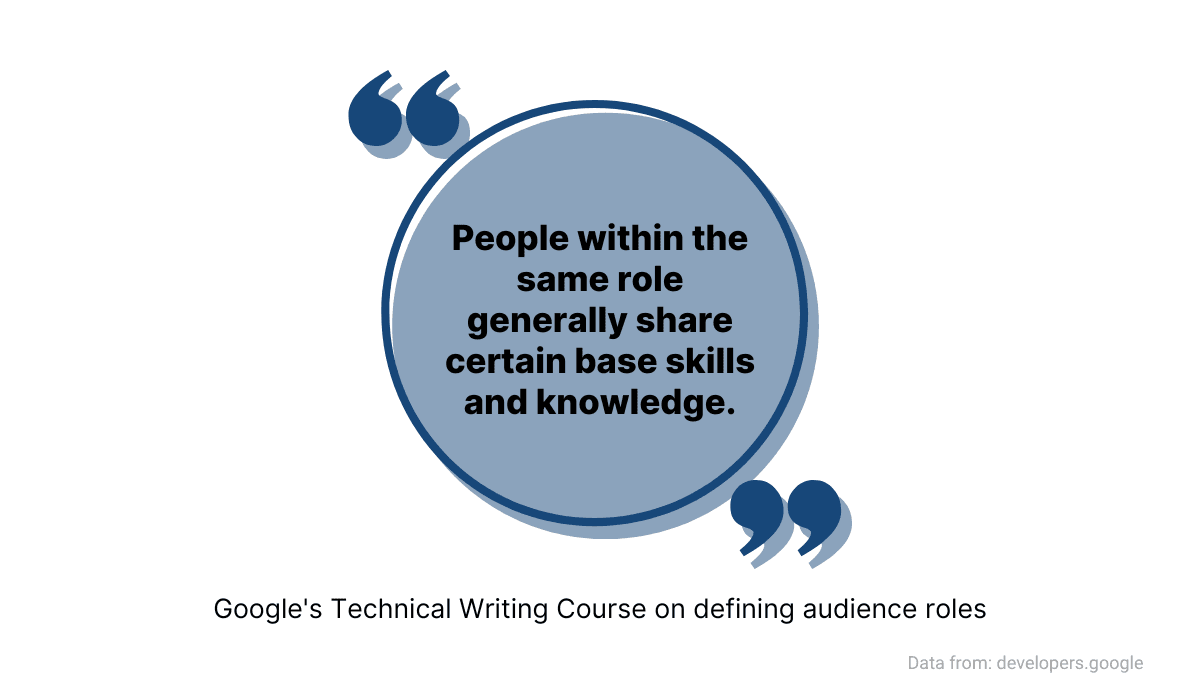
Source: Archbee
Therefore, you can do a high-quality audience analysis by defining the type of your audience and narrowing that down to roles in their types.
It makes the task of determining their existing knowledge, interests, goals, and everything else we have already emphasized much easier.
However, you can even go one level deeper in analyzing your audience—and that’s developing a persona.
Develop a Persona For Your Audience
If you analyze your audience, know who you’re writing for and what they expect from you, you might ask yourself—is there even anything more to do in that regard?
Well, there is, and it’s called developing a persona for your audience.
Here’s how the writers from PerfectIt software define it:
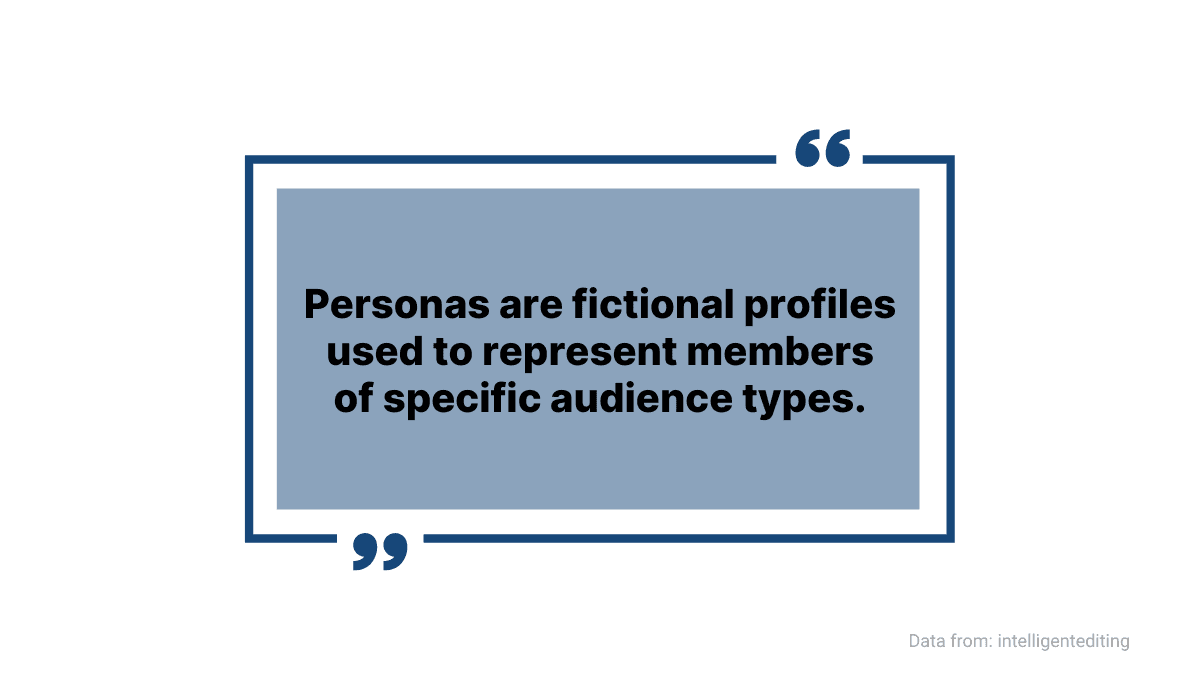
Source: Archbee
How to create a persona? That’s where all the information you gathered so far helps you.
With the data you have about your audience, you create a persona—a fictional person who has a name, gender, occupation, hobbies, nationality, etc.
In other words, you create a detailed personality for your fictional character.
Since that persona represents your audience, creating it can help you focus your writing on what’s important to them.
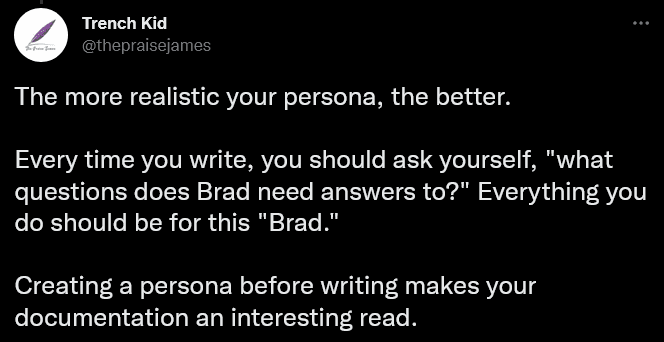
Source: Twitter
As the tweet above points out, creating a persona will also make your writing more interesting—you shouldn’t be surprised if you find that it’s easier to write for a specific person in mind than for a nameless audience.
Of course, if you’re targeting more than one type of audience, which is the possibility we mentioned earlier, you’ll want to develop more than one persona.
John Espirian, an experienced technical writer, is a firm believer in the benefits of creating personas, which he calls pen portraits.
Here’s the list of questions he asks himself when creating a “Tony” or a “Tina”:
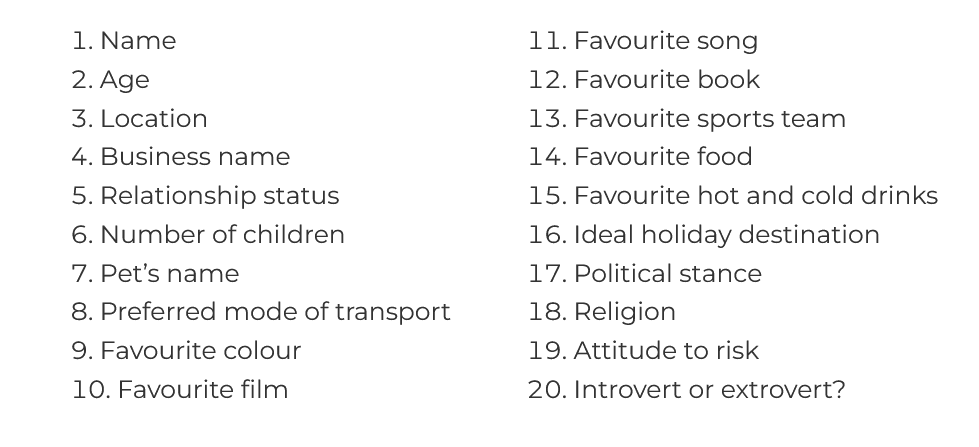
Source: Espirian
You can follow that approach or develop your own—the point is that your persona should feel like a real person who you can imagine reading your documentation.
And when you have that, it’s easier to adapt your writing to their needs. Let’s explore that next.
Adapt Your Writing to Meet Their Needs
Once you have a clear understanding of your audience, thanks to comprehensive analysis, their needs become much more apparent.
That means you can now decide what to include in your documentation, what isn’t needed, how to mold the material so your audience can get the most out of it, etc.
A particularly important part of adapting your writing is the language you use.
As Google’s Technical Writing Course emphasizes, the less technically knowledgeable your readers are, the more you need to simplify your writing.

Source: Archbee
That doesn’t necessarily mean that you have to dumb down your writing and use kindergarten-level vocabulary—just to be mindful about what terminology your audience might be familiar with and what to explain more.
For example, take a look at an excerpt from Mailfloss documentation. Below are the first few sentences of the overview.

Source: developers.mailfloss
As you can see, it’s a text that requires technical knowledge from its audience.
If the writer wrote it for experts or technicians, everything is in order—they’ll understand it, and it will meet their needs.
However, if the writer meant this as an overview for an average user, they already lost them in the second sentence.
Luckily, if you create your documentation in Archbee, like Mailfloss and many other companies did, editing your documents and adapting them to your audience is simple thanks to the collaboration with other writers, editing history, and other helpful features.

Source: Archbee
If you want your technical writing to meet its goals, adapting it to your audience is essential.
Without that step, they’ll get no use out of it, and all of your time and effort will be wasted.
Conclusion
We hope that throughout this article we showed you how critical and valuable audience analysis is.
Technical documentation is made for users.
The whole purpose is to provide them with help and information—and without knowing who the reader is, how is a technical writer supposed to create such a document?
So, give audience analysis the attention it deserves, and the results will be impressive.
Try Archbee's full range of features with our free 14-day trial.
Frequently Asked Questions
Audience analysis is the practice of figuring out who will read your docs and what they need so you can shape content they can actually use. It turns assumptions into evidence.
At a minimum, you identify:
- Roles and skill levels (for example, end users, developers, executives)
- Goals and tasks they want to accomplish
- Existing knowledge and terminology they already understand
- Reading context (device, environment, time pressure, online/offline)
- Language, accessibility, and cultural needs
With that insight, you tailor the scope, structure, tone, examples, terminology, visuals, and navigation so content is easy to find, understand, and act on.
Helpful outputs include: audience profiles, personas, a terminology/tone guide, and a content map that aligns topics to reader goals.
